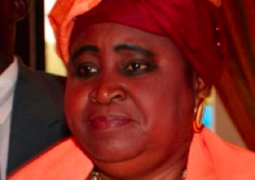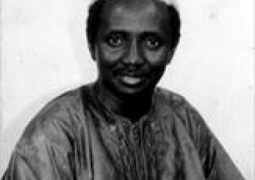The veteran journalist and managing director of The Point Newspaper, Mr. Pap Saine, has said that if it were not for journalists and the media fraternity, the rapid advancement of sports in this country would most definitely not have been possible let alone impactful. Mr. Saine, who is Reuters Dean of West and
Below is the full text of Mr. Saine's presentation
Mr. Chairman/Moderator
Madam President of The
My Dear Colleagues in the field of Journalism
Ladies and Gentlemen
It is in fact a daunting task to talk about this vast world of Sports, which as everyone appreciates, makes one of the greatest impacts on the lives of people and the community at large and which also cuts across a very wide range of disciplines. Nevertheless, Mr. Chairman, I feel greatly honoured at the same time that I have been asked to speak on the subject especially as it relates to sports journalists of this country. I happen to love sports and I happen to love journalism, so what a happy convergence of interests!
Mr. Chairman, Sports in The Gambia has grown from strength to strength starting more impactfully as far as I can remember, from the late '40's: What some have called the glorious days of sports. In that period, really, a sport was done for fun with no prospect of financial gain or remuneration of any kind. One did sports out of love and in the interest of the nation. Sports therefore developed as a genuine interest on the part of sports persons and spectators alike, as there was nothing to show but the greatest determination, commitment, skills and enormous pride of involvement. The period under discussion featured only a few active sports including in order of interest and participation: Wrestling, athletics, football, cricket and lawn tennis. These were the prominent sports of the time, in the '40's and early '50's. Wrestling generated so much interest it attracted the love and patronage of the governor (Governor Blood). As a consequence, the major wrestling contests were held at the old 'Secretariat', part of the present quadrangle now occupied by Accountant General's and Audit departments. Partly because of keen contests and partly perhaps because of the involvement of the governor, the sport received high patronage and sponsorship, as well-known figures in the business community kindled interest with financial incentives and awards. The competitions were keen to the point of spectators putting down wagers, which caused more excitement and popular interest. Competitions were so keen, great champions convened from all over the country and also from Casamance and
Apart from famous wrestlers from Niumi, we also had some from distant Niamina, Jola champions from the Foni's and Casamance and Balantas from
Interest in wrestling has continued to this very day with new venues 'Lamba' sprouting everywhere, first at Box Bar and then subsequently various locations in the Kombos. One of the greatest local patrons of the sport was the late Shyben A. Madi in whose memory, the Department of Youth and Sports has very fittingly named the arena at the Independence Stadium thanks to his son George Madi for continuing to support wrestling. Wrestling now has an Association with both local and international events co-ordinated by an active executive spearheaded by Musa Babanding Ceesay and Abdou Shyllon who took great interest in the sport in the 1950's as an arena police officer to control crowds. At the technical and organisational level are former champion Matarr Jarju and their current Secretary.
While in fact wrestling was the most popular in the early years of sports in this country, other sports, though not as widely famous, were organised occasionally for special enthusiasts. Football was one of them. They developed to an association in 1952. Its first president was Justice Sam Foster. B.O. Semega Janneh popularly known as B.O. was its second president. It is after him the GNOC has appropriately dedicated a famous sports hall at Serrekunda East Mini Stadium. Football organisations went through turbulent times, sometimes leading to angry demonstrations to fire its entire Executive. However, B.O. and his committee did hold together to produce 15 good years of service to football and football development in this country.. The formative teams were Augustinians, Gambia United, Dingareh and later Phantons, Black Diamonds,
The development and impact of football, Mr. Chairman, speaks volumes for itself so I need not make any comments on that score.
But I would like to just round up by stating that athletics and lawn tennis were also each growing sports in the '40's and have come a long way to still feature in our present day sports calendar. International tennis tournaments were held regularly in conjunction with cricket on an annual basis of return matches against Sierra-Leone. These matches were called 'Intercol' meaning inter-colonial. The tournaments later included Guinea Bissau in the 1950's under the management of Carlos Oliviera, alias Nuna or 'Man of the Moment'. At the national level yearly tournaments, called 'All-Comers' tournament, attracted rivals; Gambia Tennis Club, Bathurst Tennis Club (comprising European nationals), Good Companions Club, UAC Tennis Club and the Coalition Club of Crystal, Aston, and Indomitable using the acronym CAI (translating 'welcome' in wolof).
One unfortunate fact about tennis development, however, is the disappearance of its infrastructures. While sports like football are gaining more and more grounds, tennis has lost most of its courts to urban developers. The
Regarding the history of sports administration, we have no better place to start than the Ministry of Sports. An agency of the Gambian government, it was once attached to the Ministry of Education. The Ministry of Education, Youth and Sports, was formally restructured, de-linked in 1992 to allow for the establishment of an independent Ministry of Youth and Sports. Government policy was to give greater importance to the strategic and individual development of youth and sports in the country. The new Ministry was to henceforth design its own policies and implement its own programmes. However, even though its structure was public in orientation and substance, its mandate was often imposing and its decisions generally unilateral and non-inclusive of the public and the organisations it was established to serve. Results were therefore generally weak. Therefore in 1999, government policy changed again to transfer sports ownership rightly into the hands of its proper stakeholders, namely the private sector. The implementation of this policy produced the present National Sports Council operating now from 2000 to the present, under an intended independent council of private sector individuals and served by an Executive Secretariat. It was the intention, at least at the conceptual and design stages, to have the private sector take charge of directing and developing sports, and government acting as lead co-ordinators and facilitators. The experiment is still going on; and I am made to understand that a conference of stakeholders is being contemplated by government for due evaluation and possible re-direction of policy. Another umbrella organisation that has worked in collaboration with the National Sports Council is The Gambia National Olympic Committee.
This latter organisation has been very instrumental in our sports promotion, working with sporting associations for their material, administrative, and technical development. The GNOC is a body affiliated to the IOC (International Olympic Committee) whose technical funding agency provides assistance and support to national associations through them. Some of their main successes reported include the Olympic Africa project, development of sports infrastructure under SIIP project, Sports financing, and the popular all - inclusive mass sports, the May Day Sports and Awards Banquet. Some of its members hold influential positions in the IOC. I cannot talk about sports without mentioning cricket in the '60's with great Gambian players like OB Conateh, Abou Dandeh Njie, Ebou Taal, Eugene Decker, late Johny Johnson, late Dan Mahoney, late Sam Roberts and Solomon Gomez who is presently in the
But the story of sports, Mr. Chairman, cannot be complete without mention of sports journalism and role of sports journalists in the development effort. This will be a 'mention' as I said; anything more could be viewed as blowing our own trumpets. The contribution of sports journalists to sports promotion and development started with the electronic media in the '70's. Not only were sports programmes broadcast, but sports commentators also took the airwaves especially for commentary of major football matches. Pioneers of those days include commentators such as Sidi Jammeh, Saul Njie, Dupeh Joiner, and my humble self. These have later passed the batons on to present - day moguls like Peter Gomez of West Coast Radio, Moses Ndenne of City Limits Radio, Benjamin Wally Joof and other leading radio journalists and sportscasters. Football commentators started with Radio
Following on the heels of radio broadcast has been the print media. This has been the more effective medium so far, as sports programmes and actions are regularly reported and maintained on the ever-popular sports pages of our local papers. Dupeh Joiner started installments in The Gambia News Bulletin. The late MD Njie covered cricket and golf in that same paper. Later in 1983-1985, sports articles were featured in the
True as this may sound, efforts have however been made to cover all sports. But this objective has its constraints also, namely, manpower and at times material or technical inadequacies. We need more sports journalists to share the vast area of sports and to develop specialisation in the respective disciplines. We need materials and facilities including recorders, cameras, print material and computers to enable us carry out our work very professionally and cover all sports adequately. In that pursuit, the Sports Journalists Association has even earlier this year organised a thematic Workshop at Independence Stadium designed to address these same issues. Ladies and Gentlemen, it will be appreciated that the task is onerous, but the effort is still continuing notwithstanding.
Ladies and Gentlemen, let me end by advancing the claim, and legitimately I trust, that if it were not for Journalists and the media fraternity, the rapid advancement of sports in this country would most definitely not have been possible let alone impactful. On that note, permit me Ladies and Gentlemen to take my seat while expressing profound gratitude to NATCOM for sponsoring this important course, and to all sports journalists in this country particularly the Sports Journalists Association for their visible contribution to Sports, and finally to Media Agenda for organising this course and inviting my contribution.
Thank You.



